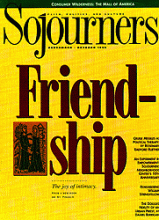After history's worst nuclear power accident at Chernobyl in 1986, the U.S. Congress instructed the Nuclear Regulatory Commission (NRC) to take a hard look at nuclear plants in this country. Which U.S. facilities were "problem" plants that could pose some kind of threat to their neighbors?
Instead of using objective criteria to assess safety concerns, NRC officials met with plant managers and together produced the required listing--reinforcing the concern of some that the NRC was more a cheerleader for the industry than a watchdog.
This summer, Public Citizen's Critical Mass Energy Project issued its own "lemons list" of the worst nuclear power reactors in the country, evaluating plants based on 11 safety, economic, and performance indicators during the period 1990-92. The report--the fourth such study by the Ralph Nader-inspired group since 1988--revealed some disturbing anomalies in the government study.
"The most dangerous reactor on our list never appeared on the NRC list," Public Citizen's Matt Freedman told Sojourners. Freedman, the report's co-author, said the No. 2 reactor in Richland, Washington, had 21 "safety system failures" in 1992 alone, against an industry average of 3.4. And yet, Freedman said, the reactor never appeared on the NRC list and the agency never imposed additional scrutiny on the plant.
Reactors designed by General Electric showed up in disproportionate numbers on the Public Citizen list. GE reactors make up one third of all U.S. plants, but comprise 70 percent of the "lemons list." Freedman said the group had written to the company's CEO, Jack Welch, asking for an explanation, but had received no reply.
Read the Full Article

